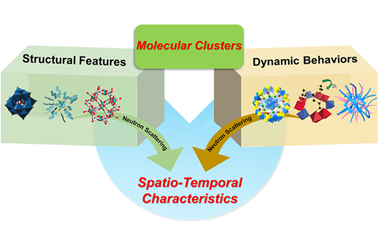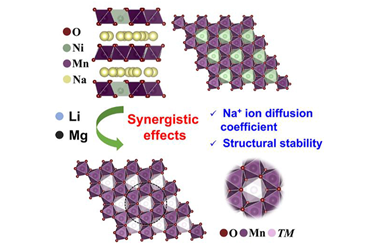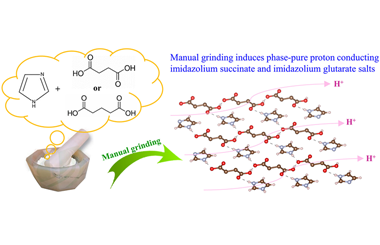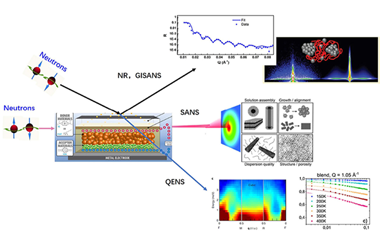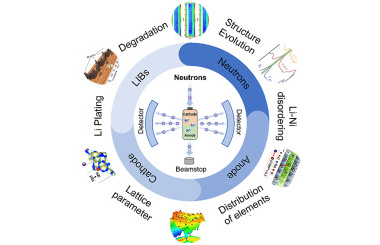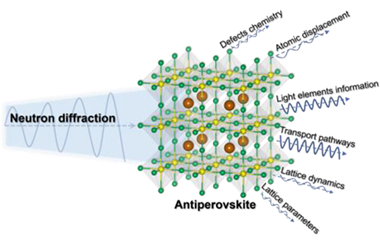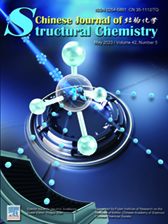
Structural insights into lithium-deficient type Li-rich layered oxide for high-performance cathode
Dongyu He, Wenxin Tong, Jia Zhang, Zhongyuan Huang, Ziwei Chen, Maolin Yang, Rui Wang, Wenguang Zhao, Zhewen Ma*, Yinguo Xiao* Submit a Manuscript
-
PerspectiveSpatiotemporal studies of molecular clusters with neutron scattering methodology
Lu Liu, Shengqiu Liu, Jin Liu, Linjie Lan, Pengcheng Cui, Junsheng Yang, Jia-Fu Yin*, Panchao Yin*
Chin. J. Struct. Chem., 2023, 42: 100102. DOI: 10.1016/j.cjsc.2023.100102
May 15, 2023
ABSTRACT
Advanced neutron scattering techniques have the unique advantages of comprehensively characterizing the hierarchical structure and dynamic behavior of molecular clusters (MCs) at a wide range of spatial and temporal scales. Therefore, the application of neutron scattering techniques can provide spatiotemporal information of MCs concerned about both the structure and dynamics topics. This will help us to get insight into their structure-property relationships and guide the rational design of MCs-based functional materials applicable for diverse application scenarios. -
Article
Alkali and alkaline ions co-substitution of P2 sodium layered oxides for sodium ion batteries
Yuncai Chen, Maolin Yang, Liangtao Yang, Ziwei Chen, Huiyun Li, Haw Jiunn Woo*, Shang-Sen Chi, Yinguo Xiao, Jun Wang*, Chaoyang Wang, Yonghong Deng*
Chin. J. Struct. Chem., 2023, 42: 100028. DOI: 10.1016/j.cjsc.2023.100028
May 15, 2023
Sodium ions batteries; Sodium layered oxides; Alkali and alkaline elements co-substitution; Neutron diffraction; Structural evolution
ABSTRACT
A P2-type Na0.67(Li0.5Mg0.5)0.1(Ni0.33Mn0.67)0.9O2 material is prepared, showing the synergistic effects of the enhancement of Na+ ion diffusion coefficient from Li substitution and the improvement of structural stability via Mg substitution, which exhibits an enhanced cycling performance with a reversible capacity of 127 mAh/g and a capacity retention of 75% over 100 cycles at 0.5C. -
ArticleNeutron diffraction study on anomalous thermal expansion of CrB2
Yong Xu, Xin Chen, Yili Cao, Kun Lin, Chin-Wei Wang, Qiang Li, Jinxia Deng, Jun Miao, Xianran Xing*
Chin. J. Struct. Chem., 2023, 42: 100009. DOI: 10.1016/j.cjsc.2022.100009
May 15, 2023
Negative thermal expansion; Neutron diffraction; Diboride
ABSTRACT
Thermal expansion of hexagonal diboride CrB2 was investigated via temperature dependence of neutron diffraction, in which zero thermal expansion of unit cell volume was determined from 5 to 130 K with coefficient of thermal expansion of ᾱV = 0.4(1) × 10−6 K−1. -
ArticleSolvent-free mechanochemical synthesis of organic proton conducting salts incorporating imidazole and dicarboxylic acids
Yating Zhou, Anucha Koedtruad, Zhenhong Tan, Dong Zhang, Lingxiang Bao, Yajun Yue, Jianyuan Wu, Juping Xu, Yuanguang Xia, Wen Yin, Maxim Avdeev, Wang Hay Kan, Takashi Kamiyama, Ping Miao*
Chin. J. Struct. Chem., 2023, 42: 100059. DOI: 10.1016/j.cjsc.2023.100059
May 15, 2023
Organic salts; Proton conducting; Mechanochemistry; Powder neutron diffraction; Solventless synthesis; Manual grinding; Conductivity; Ea energy
ABSTRACT
Solventless mechanochemical synthesis by manual grinding was applied to grow imidazole-succinic acid (C3H4N2-HOOC(CH2)2COOH) and imidazole-glutaric acid (C3H4N2-HOOC(CH2)3COOH), which exhibit different electric conducting behaviors and activation energies Ea compared with the reported single crystals obtained from the solution method. This method bears strong capability for tuning conductivities and achieves complete deuteration of the organic salts. -
ArticleStructural insights into lithium-deficient type Li-rich layered oxide for high-performance cathode
Dongyu He, Wenxin Tong, Jia Zhang, Zhongyuan Huang, Ziwei Chen, Maolin Yang, Rui Wang, Wenguang Zhao, Zhewen Ma*, Yinguo Xiao*
Chin. J. Struct. Chem., 2023, 42: 100060. DOI: 10.1016/j.cjsc.2023.100060
May 15, 2023
Li-rich layered cathode; Lithium-deficient; Neutron powder diffraction; Structure-performance relationship
ABSTRACT
High-performance lithium-deficient Li-rich cathodes have been successfully fabricated and neutron diffraction technique was employed to get insight into their structural characteristics. Based on structural characterization and electrochemical measurement results, the structure-activity relationship of lithium-deficient Li-rich cathodes is constructed. -
ReviewApplication of neutron scattering in organic photovoltaic materials
Li-Ming Wang, Lei Cao, Wen-Hai Ji, Rong Du, Ming Tang, Sheng-Lan Chen, Li-Li Yan, Yinguo Xiao*, Jun-Rong Zhang*
Chin. J. Struct. Chem., 2023, 42: 100023. DOI: 10.1016/j.cjsc.2023.100023
May 15, 2023
Neutron scattering techniques; Organic photovoltaic materials; Static morphology; Dynamic structures
ABSTRACT
In this review, we introduce three neutron scattering techniques, including neutron reflectivity, small angle neutron scattering, grazing incidence small angle neutron scattering and quasi-elastic neutron scattering, and their applications on organic photovoltaic materials. -
ReviewExploring the structural properties of cathode and anode materials in Li-ion battery via neutron diffraction technique
Yuxi Luo, Xiaoyu Gao, Mingjie Dong, Tao Zeng, Ziwei Chen, Maolin Yang, Zhongyuan Huang, Rui Wang, Feng Pan*, Yinguo Xiao*
Chin. J. Struct. Chem., 2023, 42: 100032. DOI: 10.1016/j.cjsc.2023.100032
May 15, 2023
Neutron diffraction; Lithium-ion battery; Cathode and anode materials; In operando characterization
ABSTRACT
In this review, the advantages and characteristics of neutron diffraction technique are introduced. Certainly, neutron diffraction technique is the method of choice to explore and clarify the key structural properties of electrode materials in lithium-ion batteries, which is beneficial to guide the research and development of high-performance lithium-ion batteries. -
ReviewNeutron diffraction for revealing the structures and ionic transport mechanisms of antiperovskite solid electrolytes
Lei Gao, Jiangyang Pan, Longbang Di, Jinlong Zhu, Liping Wang, Song Gao, Ruqiang Zou, Le Kang*, Songbai Han*, Yusheng Zhao
Chin. J. Struct. Chem., 2023, 42: 100048. DOI: 10.1016/j.cjsc.2023.100048
May 15, 2023
Solid-state electrolytes; Antiperovskite; Neutron diffraction; Structure
ABSTRACT
This review summarizes the progress of neutron diffraction in analyzing the structure and revealing the ionic transport mechanisms of antiperovskite SSEs. The structure-function relationships involved in ionic transport pathways, defect chemistry, anion disorder and lattice dynamics are introduced, respectively.


